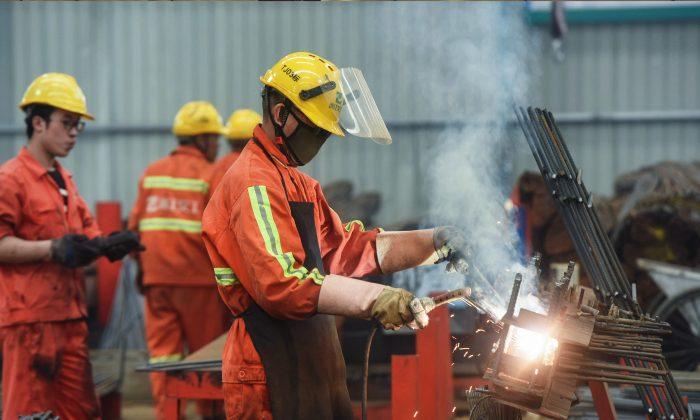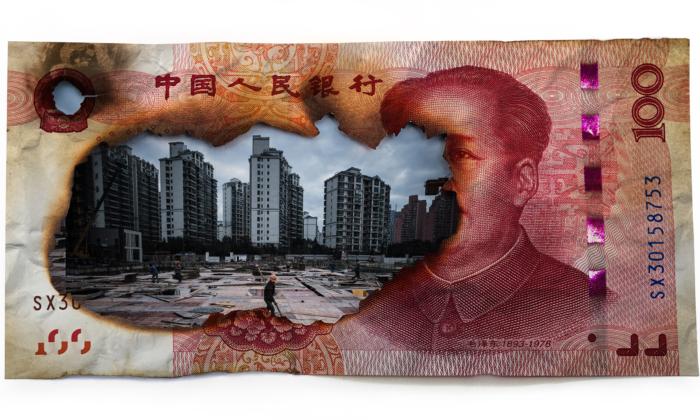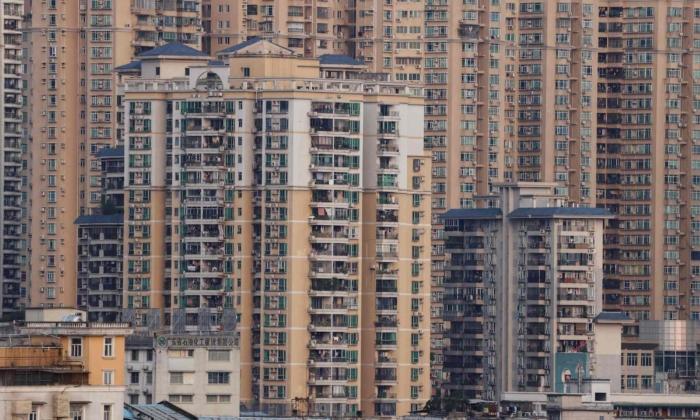The pressure is mounting for Beijing to roll out more supportive economic policies to stabilize an economy increasingly under duress.
Major economic data metrics for May were extremely negative—due in no small part to pressure from the trade war with the United States—raising the possibility of a deep economic slowdown.
May’s Chinese industrial output growth slowed to its lowest pace in almost two decades. Production at factories, mines, and utilities firms rose 5 percent in May year-over-year, a decline from a 5.4 percent pace in April, according to official statistics from the National Bureau of Statistics (NBS) on June 14. That was the slowest pace of increase in 17 years and in line with the sluggish manufacturing Purchasing Managers Index (PMI) figures. Automotive production and computers were two of the worst performing industries during last month.
Fixed-asset investments rose 5.6 percent in the January-to-May period, from the same period last year, according to official NBS data—again coming in below expectations and down from a 6.1 percent pace from the January to April period, driven by soft infrastructure growth. Fixed-asset investment is a broad-based metric for domestic demand that includes government-backed infrastructure spending.
Private sector fixed-asset investment rose 5.3 percent, also below the prior month’s pace.
While retail sales increased during the month of May, the combined April–May results are still disappointing, considering the May 1 Labor Day holiday is typically a high spending period. And these are official state-released statistics which are widely held to be overly sanguine.
More Stimulus Coming
Feeling the pressure to mitigate concerns, People’s Bank of China (PBoC) governor Yi Gang said earlier this month that there is “tremendous” room to make monetary policy adjustments if the trade war worsened.Vice Premier Liu He also joined the chorus. At a financial forum in Shanghai on June 13, Liu said that regulators should increase support for the Chinese economy and keep liquidity in the financial system, further alluding to the possibility that monetary and fiscal stimulus could be on the way.
And it looks like Beijing will have no choice but to open the spigot further. Despite a slew of support measures and policy easing efforts already underway since last year, China’s cooling economy is still struggling to get back on firm footing.
Morgan Stanley analysts expect additional policy easing going forward to boost public and infrastructure spending amidst ongoing private sector trepidation. Furthermore, government bond issuance limits could be eased and banks’ reserve requirement ratios could be further loosened.
ING’s Greater China economist Iris Pang wrote that infrastructure investments on a levered basis “could increase to around four trillion yuan ($578 billion),” and “together with tax and fee cuts of another two trillion yuan, the fiscal stimulus package may total six trillion yuan.”
“Policy easing is reactive in nature and will probably not be enough to fully offset the downward pressures,” Morgan Stanley China economist Jennifer Zheng said in a note to clients on June 14.
Support for smaller banks is already underway. To encourage small bank lending, the PBoC will use 300 billion yuan ($43 billion) in rediscount and standing lending facility (SLF) quotas. In addition, the PBoC also will begin to accept interbank certificates of deposit and bank bills as collateral from small banks for the support, it said in a statement on June 14.
The PBoC’s measures are meant to ease jitters in the interbank market and increase liquidity. Smaller banks are viewed at risk of failure ever since regulators took control of Baoshang Bank last month.
Wall Street is cutting China’s GDP growth metrics for the year, on an increased likelihood of a protracted trade war with the United States and worse-than-expected economic data going forward.
“Risk of a growth double dip could rise further if trade talks stall post G-20 or the U.S. imposes 25 percent tariffs on the remaining ~US$300 billion of imports, as the transmission channels of trade tensions impact are pervasive, the impact is non-linear, and any policy easing will be reactive with lagged effects,” Morgan Stanley China analysts wrote.
Even the usually China-positive International Monetary Fund lowered its economic forecast for China’s nominal GDP growth this year to 6.2 percent on June 5, stating that “risks are tilted to the downside.”





